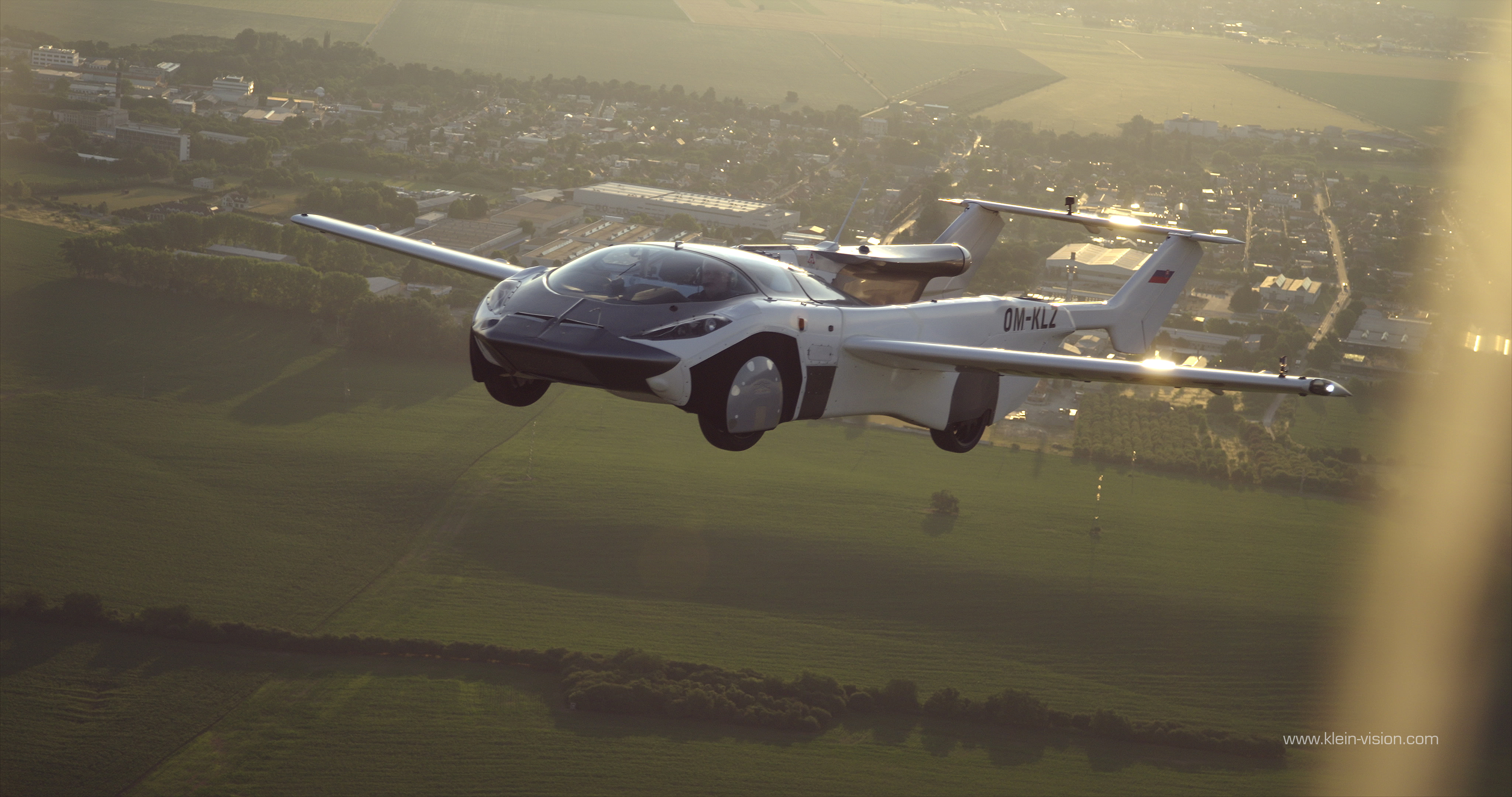A prototype flying car has completed a 35-minute flight between international airports in Nitra and Bratislava, Slovakia.
The hybrid car-aircraft, AirCar, is equipped with a BMW engine and runs on regular petrol-pump fuel.
Its creator, Prof Stefan Klein, said it could fly about 1,000km (600 miles), at a height of 8,200ft (2,500m), and had clocked up 40 hours in the air so far.
It takes two minutes and 15 seconds to transform from car into aircraft.
The narrow wings fold down along the sides of the car.
Prof Klein drove it straight off the runway and into town upon arrival, watched by invited reporters.
He described the experience, early on Monday morning, as “normal” and “very pleasant”.
In the air, the vehicle reached a cruising speed of 170km/h.
It can carry two people, with a combined weight limit of 200kg (31 stone).
But unlike drone-taxi prototypes, it cannot take off and land vertically and requires a runway.
I’ve blogged about flying cars a few times before – what can I say, the subject is fascinating, and also somewhat terrifying – with the first entry in 2017, when Uber was talking about having an “intra-urban flying vehicle network” available in 2020, with Dallas and Fort Worth being its target. Didn’t quite work out the way they envisioned – they’re now talking 2023 as a more realistic date – but that’s the way it goes. This particular model is basically a car with retractable wings; other models we have heard about include flying motorcycles and something that looks like a drone capable of carrying multiple humans. That latter model is likely a few more years off, but who knows with any of this.
There are a lot of concerns about these things, including noise, safety, and of course the climate effect, but so far that hasn’t stopped anyone from trying. As with driverless cars, which are still in their infancy and still have some major engineering challenges to solve, I think it’s a matter of when and not if for these things. We ought to at least think about how we want to integrate them into society, rather than react when they do show up. You can see more pictures and videos for this particular flying car at the Klein Vision website. CNet and Yahoo have more.


Who will insure “flying cars” and their occupants? How much is it going to cost when one falls on a school bus, brings down power lines serving a few hundred thousand customers, or collides with a freeway overpass and disrupts ground transportation for months while repairs are made? To hell with integrating them. Ban them before it’s too late.